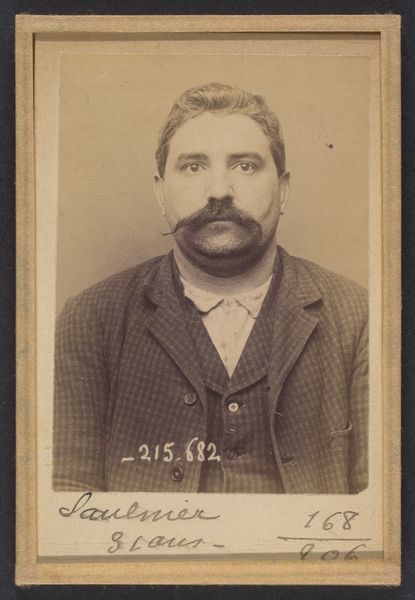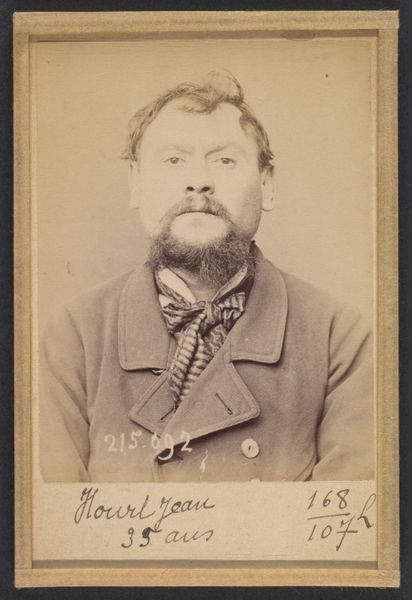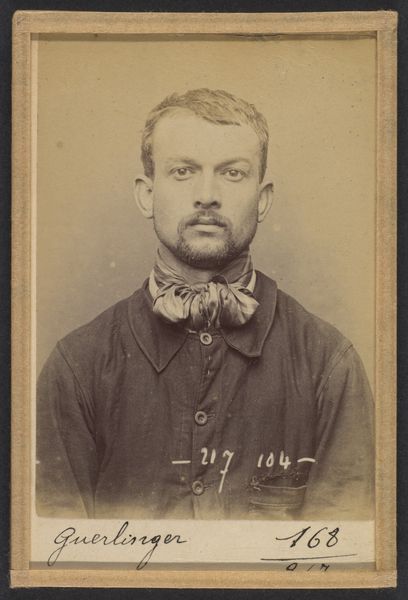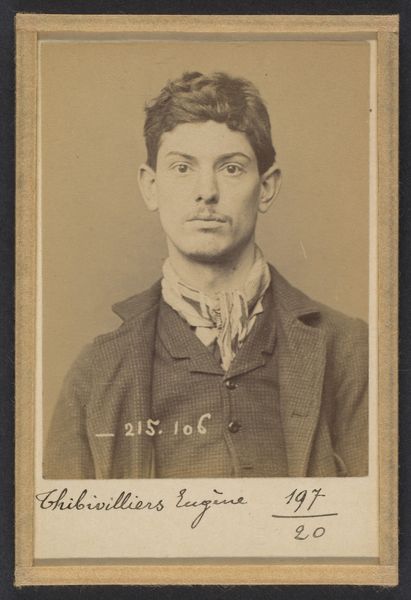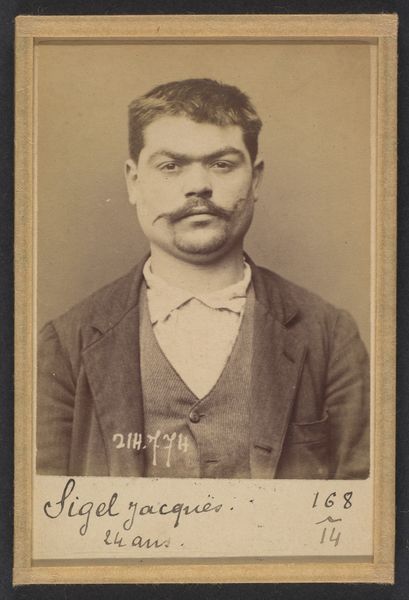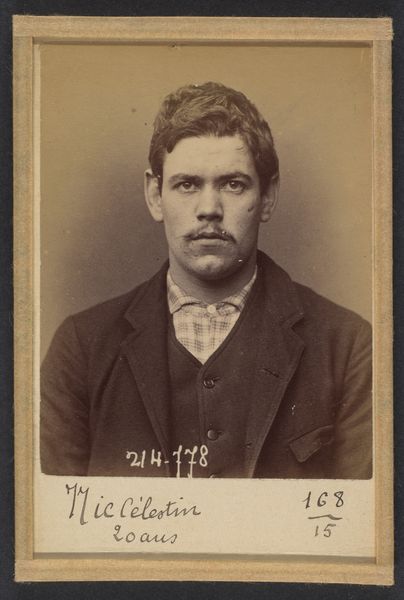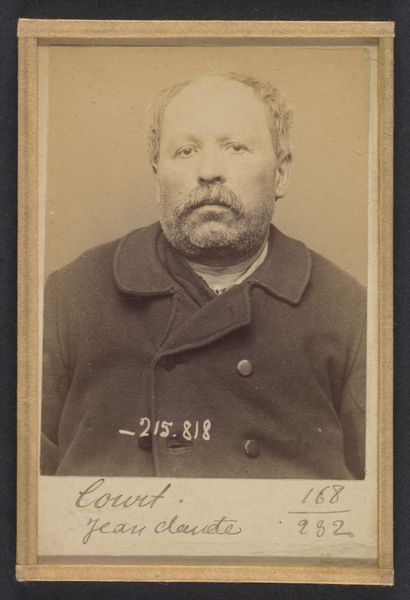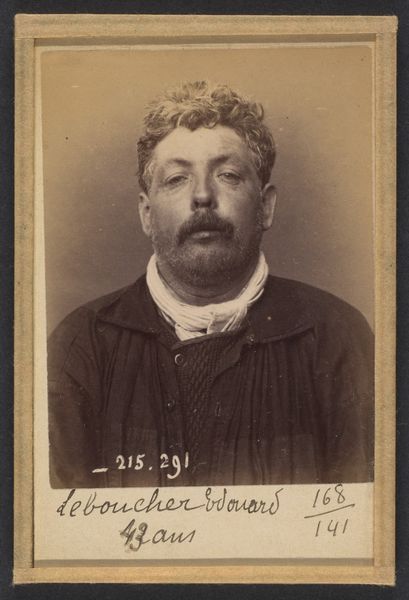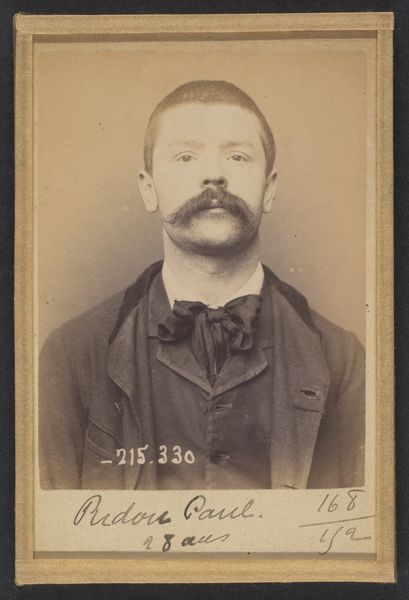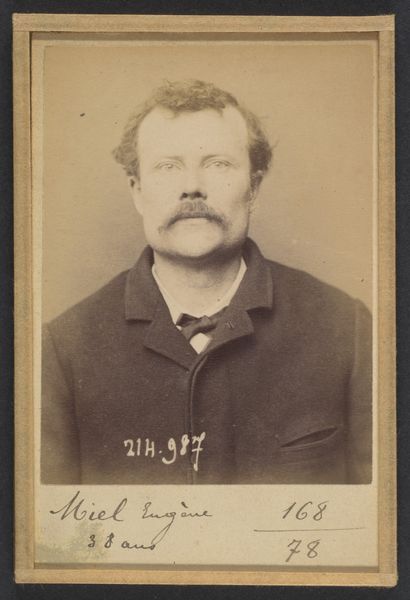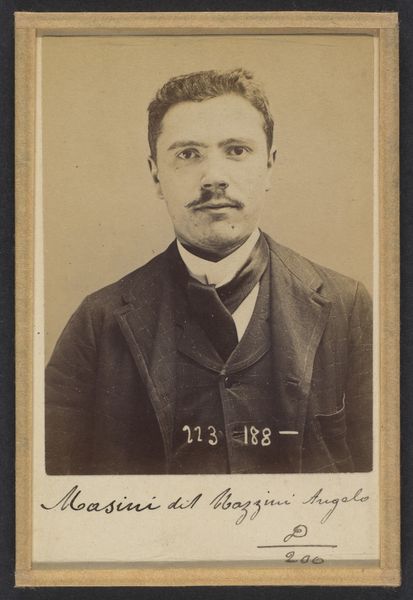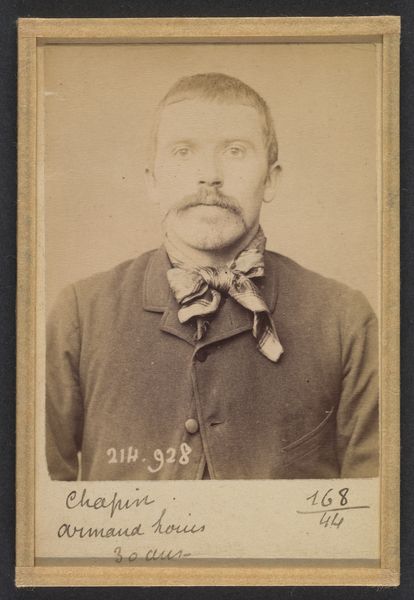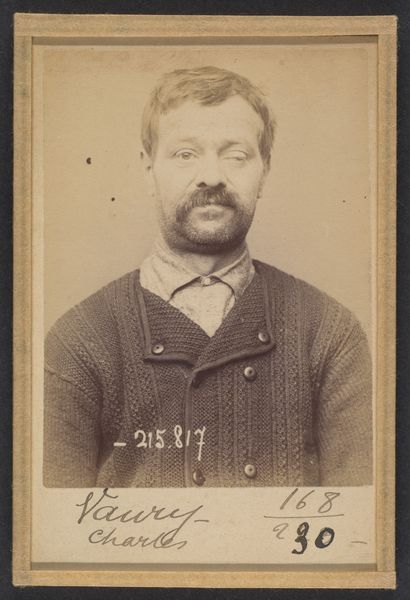
Loutrel. François. 37 ans, né à Paris XVlle. Journalier. Anarchiste. 1/3/94. 1894
0:00
0:00
#
portrait
#
low key portrait
#
portrait image
#
portrait
#
portrait subject
#
film poster
#
portrait reference
#
men
#
portrait drawing
#
portrait art
#
fine art portrait
#
celebrity portrait
Dimensions: 10.5 x 7 x 0.5 cm (4 1/8 x 2 3/4 x 3/16 in.) each
Copyright: Public Domain
Curator: I'm struck by the directness of this image. The gaze of the subject is piercing, unsettling even. There's a quiet defiance in it, a man confronting the viewer on his own terms, despite the context. Editor: Yes, and that context is crucial. What we're looking at is "Loutrel. François. 37 ans, né à Paris XVIIe. Journalier. Anarchiste. 1/3/94," a photograph taken by Alphonse Bertillon in 1894. Bertillon was a French criminologist and is best known for his creation of a system of anthropometry to identify criminals. Curator: So this is essentially a mugshot. Part of a systematic cataloging of individuals deemed outside the societal norms, especially those marked as "anarchiste". This act of visual recording, it's an early form of what Foucault would call the "gaze" of power, isn't it? Editor: Precisely. It is made as material evidence for policing. Consider the materials themselves: a photograph, reproducible, easily circulated. And also the stark contrast between his scarf and jacket suggesting available fabrics for construction during the 1890's in France. Curator: He is also so obviously labeled. Loutrel François is not just an individual here; he's a representative of a perceived threat to the social order, framed and contained by the photographic process. Even the handwritten text below the portrait on the frame – it reduces him to a set of characteristics for archival purposes. Editor: Absolutely. Consider the act of naming, numbering, quantifying, all part of a drive toward standardization, efficiency, surveillance... Think about what Bertillon did with photographic technology and anthropometric measurements to build his system, creating a template of sorts, reducing lived human experiences to pure data. Curator: It begs the question, who is the subject of this photograph, really? Is it Loutrel François, or the emerging technology and ideology seeking to define and control him? How do social forces like anarchism challenge traditional identity constructs within this context? Editor: Exactly. Bertillon’s technique facilitated social sorting under a state surveillance. Curator: Looking at it from an intersectional point of view, it raises so many questions about how power and visual technologies shape identity, policing, and resistance. Editor: Indeed, it makes you question what labour was involved, to think of his possible actions and to what use the photo was later put. Curator: Ultimately, this photo prompts me to reconsider how our own identities are constantly negotiated and defined within the context of dominant narratives and technologies of control. Editor: And how those narratives have tangible, material effects in the social structures.
Comments
No comments
Be the first to comment and join the conversation on the ultimate creative platform.
